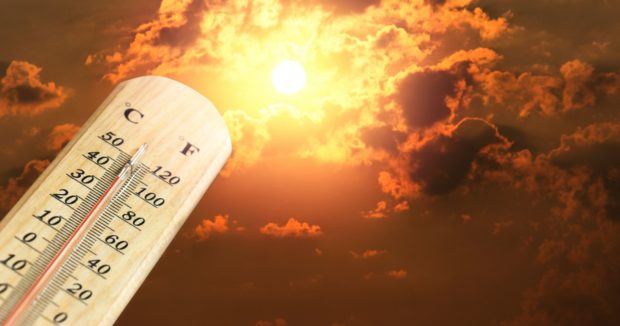Heat index of up to 44°C seen to affect 12 areas April 19, says Pagasa

The heat index in 12 areas of the country is forecast to reach the “danger” level of up to 44 degrees Celsius on Friday, April 19, 2024, according to the Philippine Atmospheric, Geophysical and Astronomical Services Administration (Pagasa). INQUIRER.net stock photo
MANILA, Philippines — Heat index in 12 areas of the country was forecast to reach the “danger” level of up to 44 degrees Celsius on Friday, the Philippine Atmospheric, Geophysical and Astronomical Services Administration (Pagasa) said.
According to Pagasa, these areas are:
- Barangay Ambulong in Tanauan, Batangas – 44 degrees Celsius
- Aborlan, Palawan – 44 degrees Celsius
- Dagupan City, Pangasinan – 43 degrees Celsius
- Sangley Point, Cavite – 43 degrees Celsius
- Puerto Princesa City, Palawan – 43 degrees Celsius
- Roxas City, Capiz – 43 degrees Celsius
- Iloilo City, Iloilo – 43 degrees Celsius
- Dumangas, Iloilo – 43 degrees Celsius
- Bacnotan, La Union – 42 degrees Celsius
- Tuguegarao City, Cagayan – 42 degrees Celsius
- Central Bicol State University of Agriculture in Pili, Camarines Sur – 42 degrees Celsius
- Dipolog, Zamboanga del Norte – 42 degrees Celsius
READ: Pagasa: ‘Extreme danger’ heat levels still to come
Based on Pagasa’s current system, a “danger” level is when the heat index is 42 to 51 degrees Celsius, which could cause heat cramps, exhaustion, and even heat stroke with prolonged exposure.
Pagasa defines heat index as “a measure of the contribution that high humidity makes to abnormally high temperatures in reducing the body’s ability to cool itself.”
READ: Roxas City, Capiz logs highest heat index on Thursday at 45°C
To prevent the effects of roasting weather, Pagasa said the public must limit time spent outdoors; drink plenty of water; avoid tea, coffee, soda, and liquor; use umbrellas, wear hats, and wear sleeved clothing outdoors; and schedule heavy-duty activities on the cooler periods of the day.
Pagasa also said that symptoms of heat-related illnesses include heavy sweating, exhaustion or fatigue, dizziness or lightheadedness, blacking out or feeling dizzy when standing, a weak but fast pulse, nausea, and vomiting.
In cases of emergency, Pagasa advised the public to do the following:
- Move the person to a shady spot and lie him or her down with legs elevated
- If conscious, have them sip cool water
- Remove clothing, apply cool water to the skin and provide ventilation
- Apply ice packs to the armpits, wrists, ankles, and groin
- Bring to a hospital immediately














